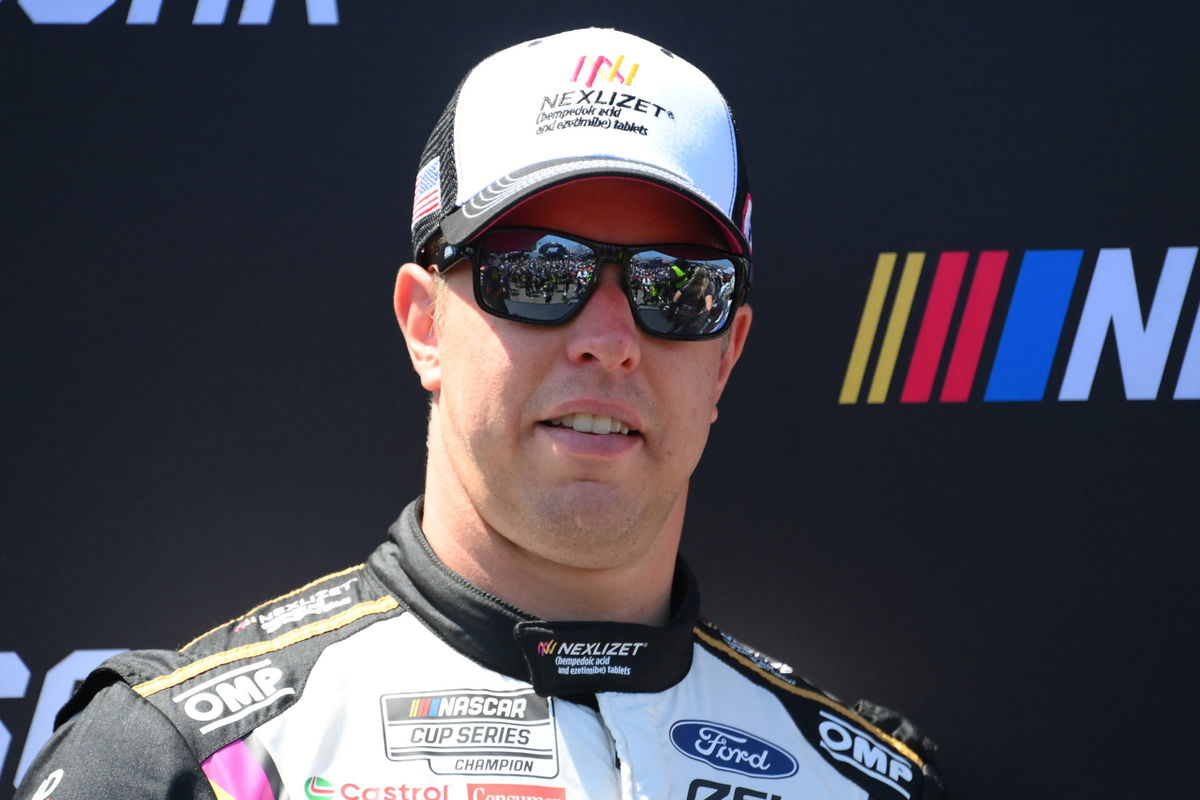
Imago
NASCAR, Motorsport, USA Go Bowling at The Glen Aug 10, 2025 Watkins Glen, New York, USA NASCAR Cup Series driver Brad Keselowski 6 prior to the Go Bowling at The Glen at Watkins Glen International. Watkins Glen Watkins Glen International New York USA, EDITORIAL USE ONLY PUBLICATIONxINxGERxSUIxAUTxONLY Copyright: xRichxBarnesx 20250810_jhp_ai8_0188

Imago
NASCAR, Motorsport, USA Go Bowling at The Glen Aug 10, 2025 Watkins Glen, New York, USA NASCAR Cup Series driver Brad Keselowski 6 prior to the Go Bowling at The Glen at Watkins Glen International. Watkins Glen Watkins Glen International New York USA, EDITORIAL USE ONLY PUBLICATIONxINxGERxSUIxAUTxONLY Copyright: xRichxBarnesx 20250810_jhp_ai8_0188
“Well, you know, it looks like NASCAR is going to change the rules next year to where we’re like 740, 750,” Brad Keselowski said a few days back about the Next Gen’s power. Sure enough, NASCAR made it official on October 8, bumping horsepower from 670 to 750 on short tracks and road courses under 1.5 miles starting next year. Now the garage is lit up with reactions. And amid the chatter, a familiar voice from the Keselowski clan stepped in with a firsthand perspective from days when engines roared freer.
Watch What’s Trending Now!
Brian Keselowski, Brad’s older brother and a veteran of ARCA and Xfinity Series action, knows those unrestricted power eras well, like before spec rules tightened in 2007. Back then, ARCA V8s often hit around 700 unrestricted horsepower. His runs, including wins at Salem and Berlin in 2007, highlighted how teams maximized raw output without today’s constraints. That’s why his take cuts through the noise, drawing straight from that proven past.
ADVERTISEMENT
Brian Keselowski fires back at NASCAR’s power move
Brian Keselowski didn’t hold back on X, sharing his ARCA insights to question the hype around NASCAR’s 2026 boost. “My Arca motor in 2007 made 800 hp to the rear wheels, around 850 hp to the flywheel,” he posted, recalling an engine he tested over 1,000 miles for potential spec viability.
My Arca motor in 2007 made 800hp to the rear wheels, around 850hp to the fly wheel.
Ran over a 1000miles on it to see if it was viable to make a spec engine out of.
ADVERTISEMENT
Cost was half the current spec engine is now…. Guess we forgot how to do that 18 years later
— Brian Keselowski (@KeselowskiBrian) October 8, 2025
ADVERTISEMENT
This wasn’t just nostalgia; back in 2007, ARCA engines were pushrod V8s with 350-396 cubic inch displacements, naturally aspirated at 12:1 compression, delivering up to 700 unrestricted HP on Sunoco fuel. Brian’s setup, sourced amid the pre-Car of Tomorrow era, echoed NASCAR’s then-flexible builds, allowing teams like his family-run K-Automotive Racing to compete affordably while hitting high outputs on tracks like Winchester, where he grabbed a second-place finish.
Digging deeper, Brian spotlighted the economics with a sharp 7-word jab: “Cost was half the current spec engine.“ Today’s ARCA Ilmor 396 spec engine, introduced in 2015, costs $35,000 to build and $15,000 to rebuild for 1,500 miles, featuring electronic fuel injection and a capped 7,500 RPM for parity.
In contrast, 2007 open-rule motors, often leased or bought from Cup teams at lower rates during the COT transition, let independents like Brian thrive without ballooning budgets; his family team notched two wins that year. He’s clearly frustrated, implying NASCAR’s modest 750 HP step ignores lessons from when higher power didn’t demand premium prices, especially as engines back then endured multi-track abuse without quick failures.
ADVERTISEMENT
Even Brad Keselowski, co-owner of RFK Racing, has weighed in on the shift, noting the current setup’s limitations. “It’s not quite 100, because, you know, right now, technically, they’re at 670, but realistically, they’re like 685, 690, so,” he explained on the podcast, underscoring how the Next Gen car’s restricted power changes driving from precise modulation to flat-out aggression.
This echoes Brian’s point: pre-2015 ARCA and early 2000s NASCAR allowed over 800 HP without today’s cost hikes or reliability woes, as seen in Brian’s 12-race 2007 slate splitting time between K-Automotive and Gerhart Racing. The brothers’ shared racing roots, with Brian spotting and crewing while Brad climbed to Cup champ, add weight, suggesting the boost falls short of recapturing that raw, efficient edge.
But while the Keselowskis highlight what once worked, NASCAR’s decision-makers had their own calculations in play. As the series eyes sustainability, the choice of 750 HP reveals a bigger strategy at work.
ADVERTISEMENT
Why is 750 HP the limit?
NASCAR’s bump to 750 HP for next year targets a “sweet spot” for better short-track action without overhauling everything. Officials, after chats with Toyota, Ford, and Chevrolet, opted for a larger tapered spacer to enhance airflow, simple enough to avoid redesigning internals.
Cost was a huge factor, with Steve O’Donnell explaining the long view on the Dale Jr. Download podcast, “Our job is to think about the out-years. We’re looking at Dodge coming into the sport, and potentially other OEMs like Honda, along with our current partners. The existing manufacturers—Toyota, Chevrolet, and Ford—like the current engine and don’t want to make a change unless we’re going to stick with it.”
Any aim beyond 750 would rack up $40-50 million in immediate tweaks as per O’Donnell, which would clash with plans for a new engine architecture three years later.“We didn’t want to jump to 1,000 horsepower now and then change everything again in three years. That would cost hundreds of millions to the industry.”
It’s not about max spectacle yet, but stabilizing the field—echoing how ARCA’s 2015 spec shift curved costs long-term. Offseason runs at North Wilkesboro with drivers like Joey Logano will fine-tune aero and grip, ensuring the boost enhances racing without breaking banks.
ADVERTISEMENT
ADVERTISEMENT
ADVERTISEMENT

